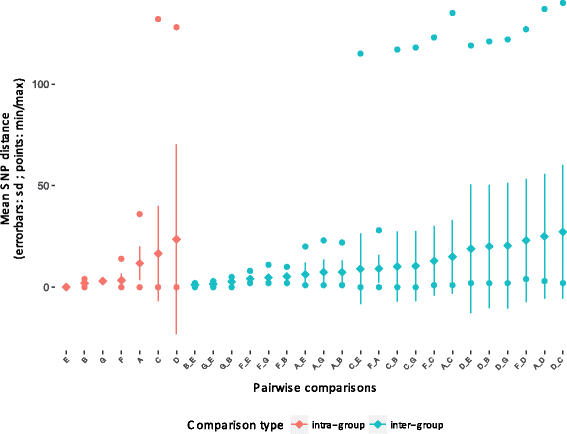Vancomycin-resistant Enterococcus faecium sequence type 796 - rapid international dissemination of a new epidemic clone
- PMID: 29588851
- PMCID: PMC5863837
- DOI: 10.1186/s13756-018-0335-z
Vancomycin-resistant Enterococcus faecium sequence type 796 - rapid international dissemination of a new epidemic clone
Abstract
Background: Vancomycin-resistant Enterococcus faecium (VRE) is a leading cause of hospital-acquired infections. New, presumably better-adapted strains of VRE appear unpredictably; it is uncertain how they spread despite improved infection control. We aimed to investigate the relatedness of a novel sequence type (ST) of vanB E. faecium - ST796 - very near its time of origin from hospitals in three Australian states and New Zealand.
Methods: Following near-simultaneous outbreaks of ST796 in multiple institutions, we gathered then tested colonization and bloodstream infection isolates' antimicrobial resistance (AMR) phenotypes, and phylogenomic relationships using whole genome sequencing (WGS). Patient meta-data was explored to trace the spread of ST796.
Results: A novel clone of vanB E. faecium (ST796) was first detected at one Australian hospital in late 2011, then in two New Zealand hospitals linked by inter-hospital transfers from separate Melbourne hospitals. ST796 also appeared in hospitals in South Australia and New South Wales and was responsible for at least one major colonization outbreak in a Neonatal Intensive Care Unit without identifiable links between centers. No exceptional AMR was detected in the isolates. While WGS analysis showed very limited diversity at the core genome, consistent with recent emergence of the clone, clustering by institution was observed.
Conclusions: Evolution of new E. faecium clones, followed by recognized or unrecognized movement of colonized individuals then rapid intra-institutional cross-transmission best explain the multi-center, multistate and international outbreak we observed.
Keywords: Infection control; Molecular epidemiology; Outbreak; VRE; Whole genome sequencing.
Conflict of interest statement
VRE isolates were collected and compared, along with rates of bloodstream infection, using non-identifying data as part of standard infection control procedures under appropriately constituted infection control committees at each institution.Not applicable.The authors declare that they have no competing interests.Springer Nature remains neutral with regard to jurisdictional claims in published maps and institutional affiliations.
Figures




References
Publication types
MeSH terms
Substances
LinkOut - more resources
Full Text Sources
Other Literature Sources

